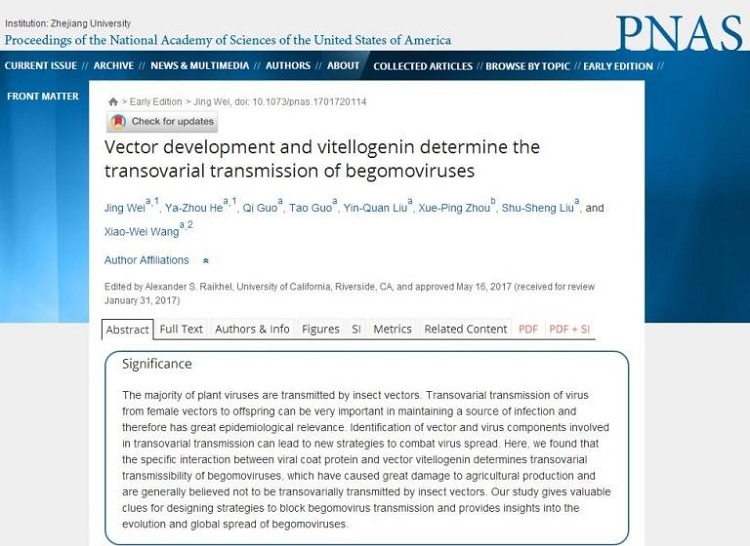Tomato yellow leaf curl virus (TYLCV) causes one of the most devastating diseases of tomato worldwide and has quickly spread from the Mediterranean region to more than 50 countries worldwide. TYLCV is exclusively transmitted by the whitefly Bemisia tabaci in a circulative manner and are maintained through plant-insect-plant cycle. Other routes of transmission of the viruses are not clearly known.
Professor WANG Xiao-Wei’s research group in the Institute of Insect Sciences, College of Agriculture and Biotechnology, Zhejiang University, recently discovered that transovarial transmission from female whiteflies to offspring often happens for TYLCV and may have contributed significantly to its global spread. The five-year study show that TYLCV entry of the reproductive organ of its insect vector whitefly B. tabaci mainly depend on the developmental stage of whitefly ovary and the success of transovarial transmission of TYLCV to vector offspring increase with whitefly adult age. TYLCV co-localize with whitefly vitellogenin (Vg) in ovaries, and viral coat protein interact with Vg.When knocking down the expression of Vg in whitefly, the rate of transovarial transmission of TYLCV decrease. These data indicate that specific interactions between viral coat protein and whitefly Vg determine the transovarial transmission of TYLCV. They also show that the transovarial transmission of TYLCV is important for maintaining a source of virus in the absence of virus-infected plants. These findings fill an important gap in understanding geminivirus transmission and reveal the role of transovarial transmission by insect vector in facilitating global spread of TYLCV.
This work was recently published in Proc. Nat. Acad. Sci. (USA). The study was funded by the National Natural Science Foundation of China (31390421) and the National Basic Research Program of China (2014CB138404)
Article link: http://www.pnas.org/content/early/2017/06/07/1701720114.abstract
